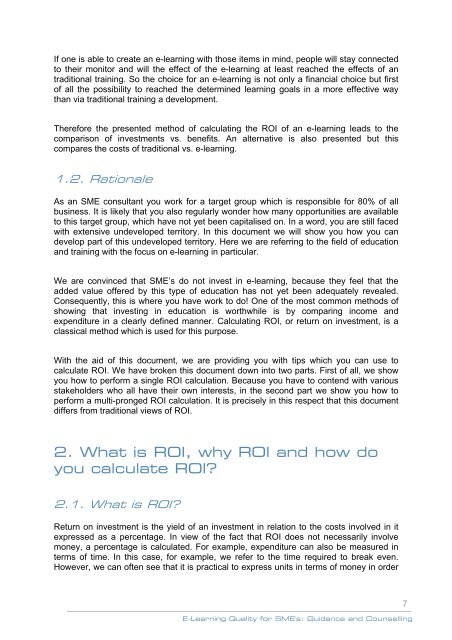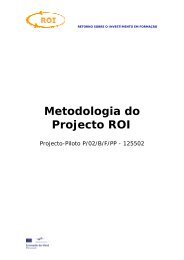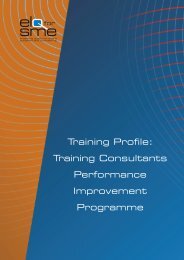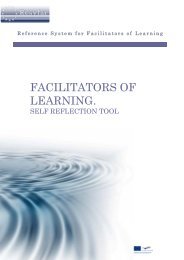Guide for Training Consultants: e-Learning Quality and ROI ... - Cecoa
Guide for Training Consultants: e-Learning Quality and ROI ... - Cecoa
Guide for Training Consultants: e-Learning Quality and ROI ... - Cecoa
- No tags were found...
Create successful ePaper yourself
Turn your PDF publications into a flip-book with our unique Google optimized e-Paper software.
If one is able to create an e-learning with those items in mind, people will stay connectedto their monitor <strong>and</strong> will the effect of the e-learning at least reached the effects of antraditional training. So the choice <strong>for</strong> an e-learning is not only a financial choice but firstof all the possibility to reached the determined learning goals in a more effective waythan via traditional training a development.There<strong>for</strong>e the presented method of calculating the <strong>ROI</strong> of an e-learning leads to thecomparison of investments vs. benefits. An alternative is also presented but thiscompares the costs of traditional vs. e-learning.1.2. RationaleAs an SME consultant you work <strong>for</strong> a target group which is responsible <strong>for</strong> 80% of allbusiness. It is likely that you also regularly wonder how many opportunities are availableto this target group, which have not yet been capitalised on. In a word, you are still facedwith extensive undeveloped territory. In this document we will show you how you c<strong>and</strong>evelop part of this undeveloped territory. Here we are referring to the field of education<strong>and</strong> training with the focus on e-learning in particular.We are convinced that SME’s do not invest in e-learning, because they feel that theadded value offered by this type of education has not yet been adequately revealed.Consequently, this is where you have work to do! One of the most common methods ofshowing that investing in education is worthwhile is by comparing income <strong>and</strong>expenditure in a clearly defined manner. Calculating <strong>ROI</strong>, or return on investment, is aclassical method which is used <strong>for</strong> this purpose.With the aid of this document, we are providing you with tips which you can use tocalculate <strong>ROI</strong>. We have broken this document down into two parts. First of all, we showyou how to per<strong>for</strong>m a single <strong>ROI</strong> calculation. Because you have to contend with variousstakeholders who all have their own interests, in the second part we show you how toper<strong>for</strong>m a multi-pronged <strong>ROI</strong> calculation. It is precisely in this respect that this documentdiffers from traditional views of <strong>ROI</strong>.2. What is <strong>ROI</strong>, why <strong>ROI</strong> <strong>and</strong> how doyou calculate <strong>ROI</strong>?2.1. What is <strong>ROI</strong>?Return on investment is the yield of an investment in relation to the costs involved in itexpressed as a percentage. In view of the fact that <strong>ROI</strong> does not necessarily involvemoney, a percentage is calculated. For example, expenditure can also be measured interms of time. In this case, <strong>for</strong> example, we refer to the time required to break even.However, we can often see that it is practical to express units in terms of money in orderE-<strong>Learning</strong> <strong>Quality</strong> <strong>for</strong> SME's: Guidance <strong>and</strong> Counselling7








